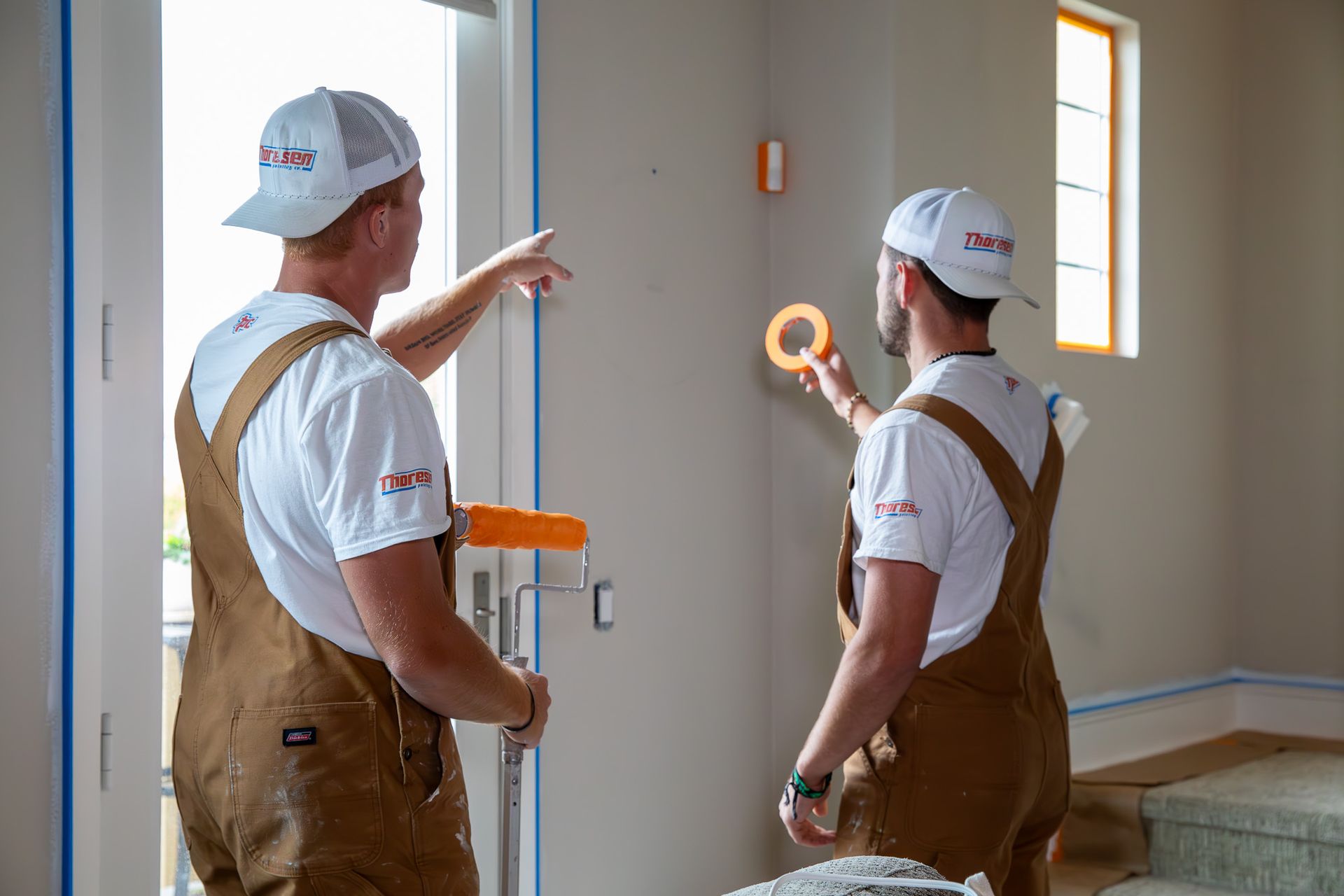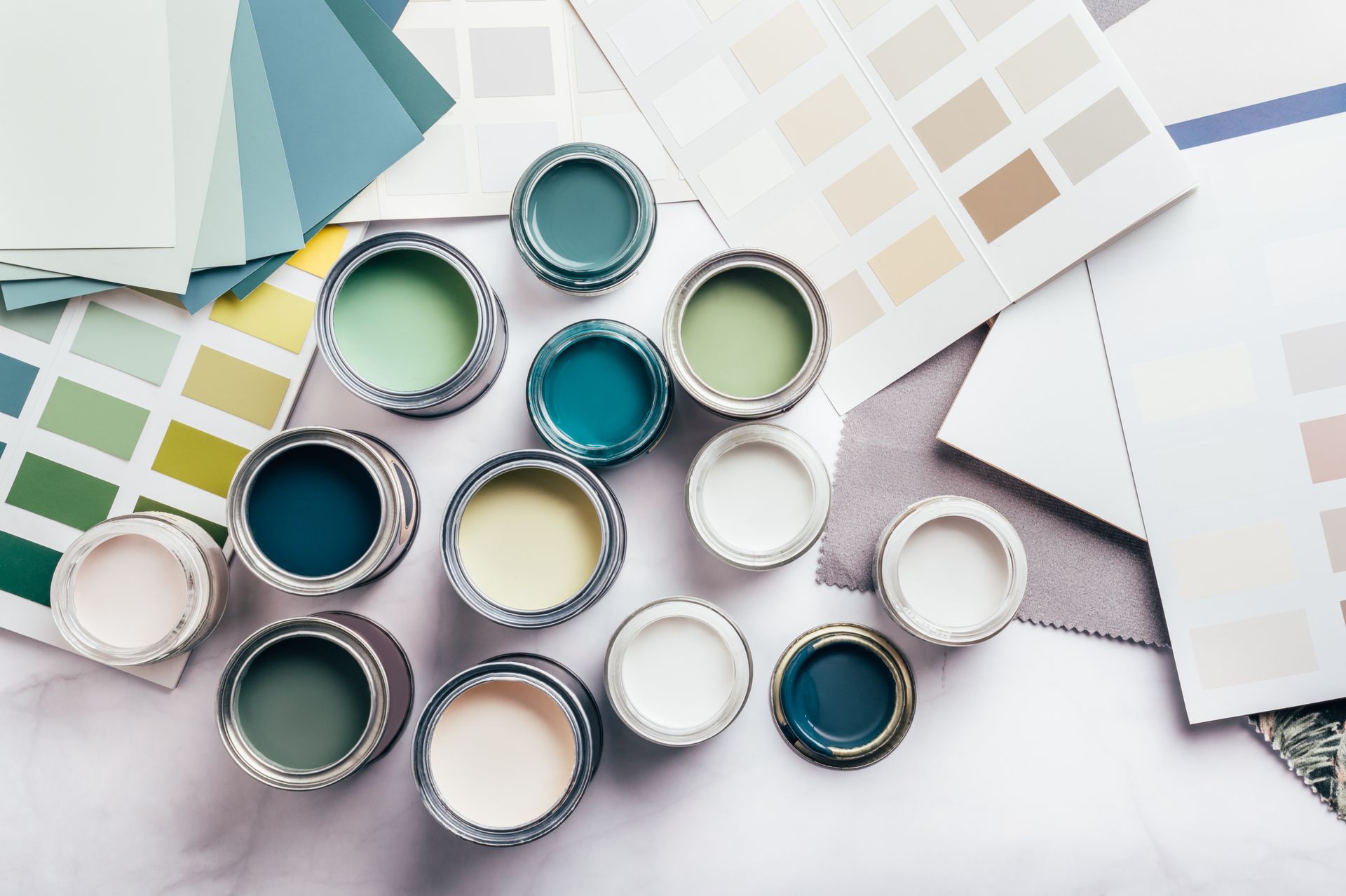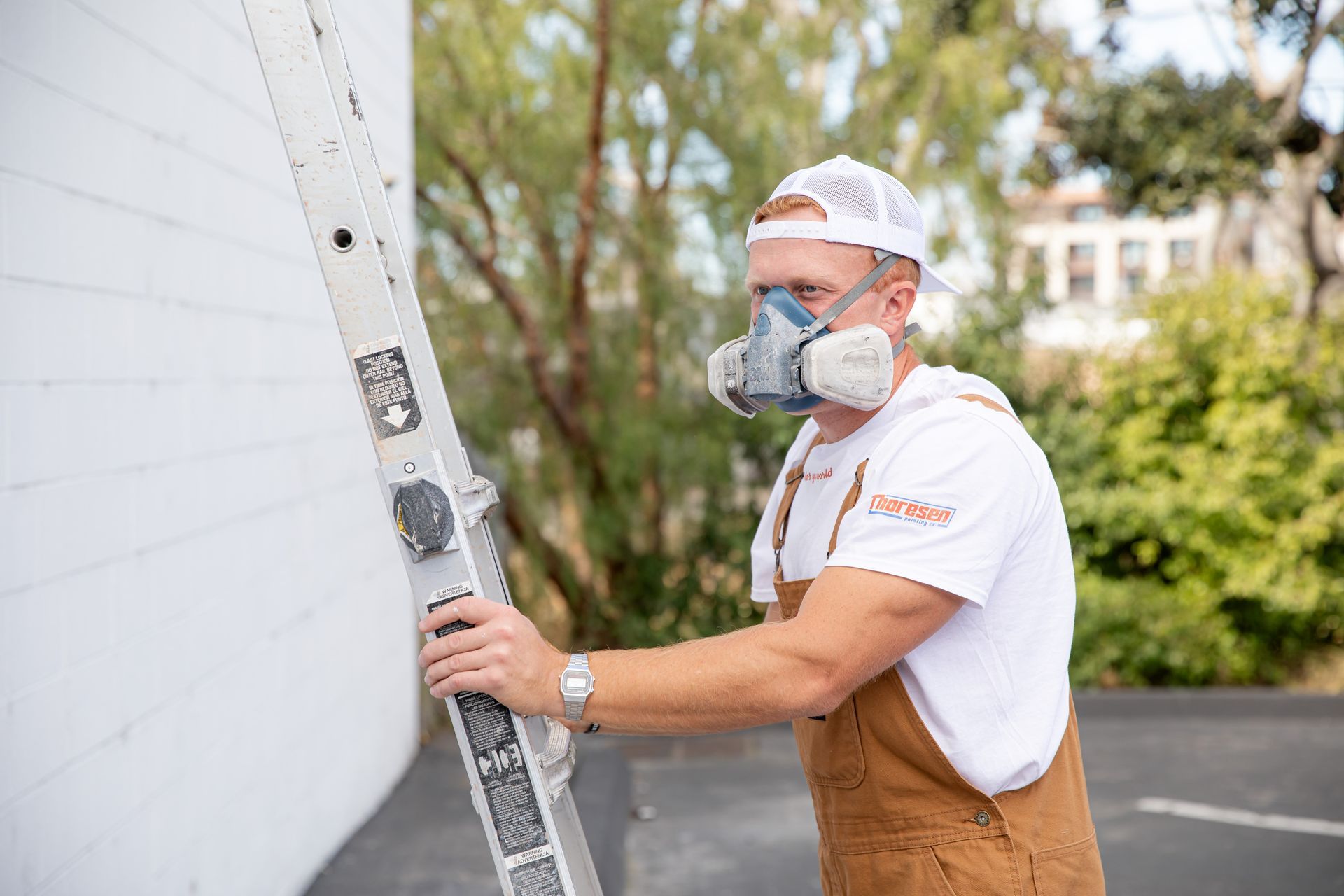Understanding Paint Finishes: Matte, Satin, Semi-Gloss, and More
How to Choose the Right Finish for Every Room or Surface
Choosing a paint color can be tough, but selecting the right paint finish is just as important. The finish you choose affects how your walls look, feel, and hold up over time.
At Thoresen Painting, we help homeowners, business owners, and designers across San Diego pick the ideal finish for every surface, whether it’s a cozy bedroom, a high-traffic hallway, or a vibrant mural. Here’s what you need to know about matte, satin, semi-gloss, gloss, and how to make the right choice for your space.
Why Paint Finish Matters
Paint finishes (also called “sheens”) range from flat to high-gloss, each offering different benefits:
- Aesthetic: The finish affects how light reflects off the surface, which can change the overall look of a room.
- Durability: Some finishes are more resistant to moisture, stains, and wear, making them better for high-use areas.
- Cleanability: Higher-sheen paints are generally easier to wipe down.
Common Paint Finishes Explained
1. Matte (Flat Finish)
Best For: Ceilings, low-traffic rooms, accent walls
Look: Soft and non-reflective
Pros:
Hides imperfections well, Rich, smooth appearance
Cons:
Harder to clean, Can scuff easily
Ideal for: Bedrooms, living rooms, or ceilings where minimal light reflection and a calm look are preferred.
2. Eggshell
Best For: Living rooms, dining rooms, or offices
Look: Low sheen with slight luster (like an eggshell)
Pros:
Slightly more durable than matte, Still hides minor wall flaws
Cons:
Not ideal for areas that need frequent cleaning
Ideal for: General-purpose walls in areas with moderate foot traffic.
3. Satin
Best For: Kitchens, bathrooms, kids' rooms, hallways
Look: Smooth and velvety with a soft sheen
Pros:
Easy to clean, Great balance between aesthetics and durability
Cons:
Can reveal wall imperfections more than eggshell or matte
Ideal for: Busy households or commercial interiors where walls need to be wiped regularly.
4. Semi-Gloss
Best For: Trim, doors, cabinets, bathrooms
Look: Noticeably shiny and reflective
Pros:
Highly durable and washable, Moisture- and stain-resistant
Cons:
Highlights imperfections on uneven surfaces
Ideal for: High-traffic or high-moisture areas like kitchens and bathrooms, and for surfaces that need to stand out.
5. Gloss / High-Gloss
Best For: Furniture, decorative features, commercial finishes
Look: Very shiny and glass-like
Pros: Ultra-durable and easy to clean, Bold, modern aesthetic
Cons: Shows every imperfection. Surface prep must be flawless
Ideal for: Cabinetry, statement walls, or modern commercial applications where durability and shine are essential.
How to Choose the Right Finish
Ask yourself:
- How much traffic will this space see? More traffic usually calls for more durability (satin or above).
- Do you need to clean this surface regularly? Kitchens, bathrooms, and kids' rooms benefit from wipeable finishes like satin or semi-gloss.
- Do you want to hide imperfections? Matte and eggshell are more forgiving for older or uneven walls.
- Is it a decorative focal point or trim? Semi-gloss or gloss adds visual pop and durability.
Pro Tip from Thoresen Painting
Many rooms benefit from mixing finishes. For example, you can use:
- Eggshell on walls for a soft feel
- Semi-gloss on trim and doors for contrast and durability
- Matte on ceilings to reduce light reflection
Let’s Pick the Perfect Finish Together
At Thoresen Painting, we’ve painted everything from ocean-view homes in La Jolla to custom murals and bustling commercial spaces throughout San Diego. We’ll help you choose the right finish, not just for style, but for real-life performance.
Need help deciding what finish is best for your space?
Contact us today to schedule your free consultation.





